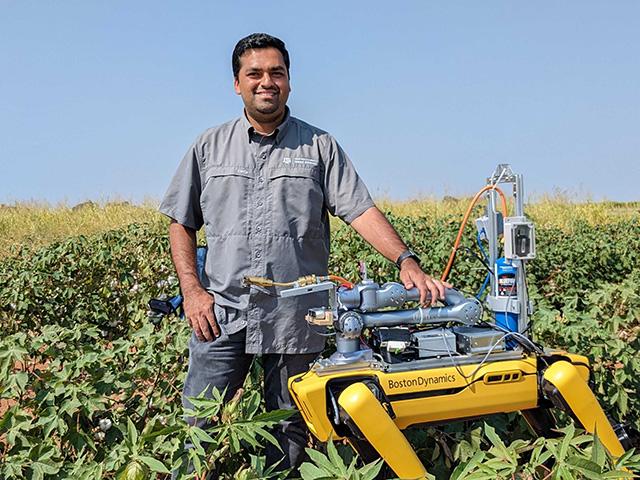Best Blog of the Week
Production Blog: Weed-killing Robot Dog Could Become a Farmer's Best Friend
JEFFERSON CITY, Mo. (DTN) -- With the rise of herbicide resistance, some might say that weed control has gone to the dogs. In one particular case, it quite literally has -- well, a robot dog, that is.
At the recent annual meeting of the Weed Science Society of America, Joe Johnson, a doctoral student at Texas A&M University, presented his research project on the use of a quadruped robot "dog" for weed control. He took Spot, built by Boston Dynamics, equipped him with a propane torch affixed to a six-axis arm and trained him to seek out common sunflower in a cotton field.
The result? Weeds cooked to a crisp with a 2,642-degree flame with 97.3% precision. Good boy, Spot.
While the research may seem like a novelty at first glance, the use of a four-legged robot like Spot offers some distinct advantages, Johnson said. First, when compared to an autonomous wheeled robot, the robot dog is smaller and more agile, which lessens risk of crop damage.
P[L1] D[0x0] M[300x250] OOP[F] ADUNIT[] T[]
"It also has omni-directional mobility, which means it can be more efficient," he explained. "Rather than having to travel to the end of the row and turn around, it can cross rows to the next weed."
The Boston Dynamics' robot is 19.7 inches wide, so theoretically, it would be able to negotiate any crop planted in 20-inch or greater row widths. Johnson said that in addition to crops like cotton, specialty vegetable crops such as broccoli, cabbage, lettuce, potato and sweet potato could all be candidates for flaming weed control delivered on a quadruped robot.
With a maximum speed of just more than 3.5 mph, Spot could cross a 40-acre field corner-to-corner diagonally in just under six minutes. The length of time it would take to kill weeds in that field would depend on weed density and crop row width, Johson said.
Spot does have his limitations, however. While he may be more agile than a wheeled robot, he's less energy efficient, Johnson said. The four-legged robot also has an Ingress Protection (IP) rating of IP54, which means it only has a limited level of water resistance.
"It's not built to work in rainy conditions," Johnson explained. "It also performs poorly in flooded field conditions and can get tangled or fall while moving in fields with creeping weeds such as morningglory."
Johnson said the flaming weed-control system shows potential for targeting weed escapes in mid-to-late season that can be difficult to manage with conventional herbicides or other mechanical methods. In the future, he plans to test the system's effectiveness on multiple weed species, as well as look into other weed-removal options -- such as blades or lasers -- that can be integrated into the robot.
Johnson's research certainly gives brand-new meaning to the term, "burn down," doesn't it?
Watch a video of Spot in action here: https://www.youtube.com/…
Jason Jenkins can be reached at jason.jenkins@dtn.com
Follow him on X, formerly known as Twitter, @JasonJenkinsDTN
(c) Copyright 2024 DTN, LLC. All rights reserved.




